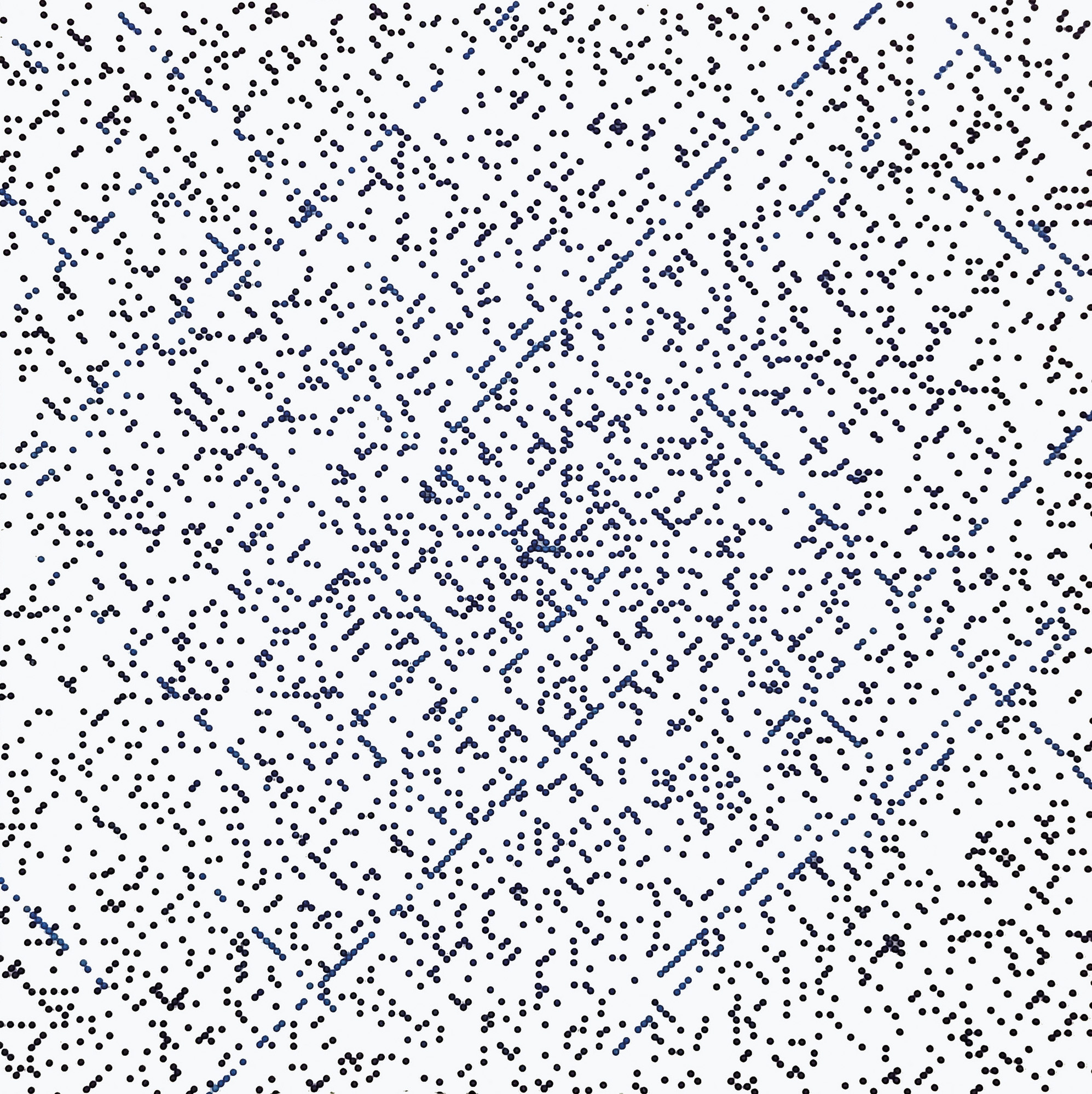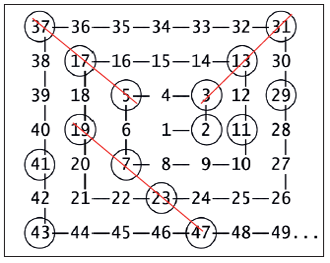| Stomachion | |||||
 |
Ulam Spiral During an event in 1963, mathematician Stanislaw Ulam (1909-1984) doodled a number sequence on a piece of paper out of boredom. He started with a "1" in the middle and then continued in a spiral pattern. When the sheet was full, he circled all the prime numbers and suddenly became wide awake. To his surprise, prime numbers tended to lie on diagonal lines in the number spiral. Was he onto a formula for calculating prime numbers? Prime numbers are integers that are indivisible, while all other numbers can be composed by addition or multiplication of prime numbers. Prime numbers are therefore considered the elementary particles of mathematics. Despite this property, they seem to appear randomly and arbitrarily in the sequence of numbers. It is impossible to predict which will be the next prime number using a mathematical formula. For example, in December 2018, during a crowdsourcing project, numerous interconnected computers took 6 days to calculate the largest known prime number with over 24 million digits. But why all this effort? Few people have anything to do with prime numbers in everyday life since their school days. However, if someone were to find a rule for quickly determining large prime numbers, it would be a kind of disaster for the world. All internet communication would collapse with unforeseeable economic consequences because all secure encryption methods on the internet or even for credit cards rely on operations with huge prime numbers (RSA algorithm). The time required to find the prime numbers used in encryption is so enormous that hacking becomes impossible. Although Ulam didn't ultimately find a rule for determining prime numbers with his doodling, he did focus on the computer as a means of illustrating mathematical structures that could perhaps lead to new theorems. He laid the groundwork for a veritable explosion of experimental mathematics.
|
| Pins on lightweight board (70 x 70 cm). The points (pins) represent the prime numbers on a 200 x 200 Ulam number spiral. | |
 |